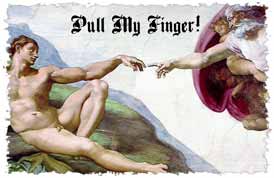SunTek Chung @ Samson Projects
So, I’m at SunTek Chung’s opening @ Samson Projects and I meet this guy.
“Where are you from?” I ask him.
“Well, I was born in California, but I don’t remember it. I went to high school in Maine, but I usually say I’m from New Orleans even though I only lived there a year …”
blah, blah, blah.
Midway through not listen to him, realized that I had not asked him a question about a location, I had inadvertently asked him a question about how he defined himself.
Apparently, if you ask someone where they are from, you are really asking them a question about their identity. And realistically, you are asking them to self-stereotype along regional lines.
SunTek Chung’s latest exhibition @ Samson Projects challenges the geography and ownership of culture. In Chung’s piece “The South, The South”, Chung places himself squarely in the zone of cultural ambiguity. Who owns the image of the Confederate Flag? As a Southerner from Richmond, Chung has a claim to it, but not in the way the stereotype of a Southerner mandates. Who owns the South Korean flag? As a Korean-American, Chung also has a claim to the cultural symbols of South Korean identity, but again, the binary hyphen in "Korean-American" means his claim is not the stereotypical claim. The strength of Chung’s work lies in the fact that when confronted with not fitting into one stereotypical binary or another, Chung constructs his own identity. When forced to choose between two flags, Chung makes his own hybrid flag with parts from both flags.
Chung mines the fertile ground of the space in-between two stereotypes in order to create a new visual culture while simultaneously undermining both stereotypes. Homi Bhahba writes in The Location of Culture, "In-between spaces provide the terrain for elaborating strategies of selfhood--singular or communal--that initiate new signs of identity, and innovative sites of collaboration, and contestation, in the act of defining the idea of society." (p. 1-2) It is important to note that while Chung’s work can be interpreted using post-colonial theory, his work is not merely an illustration of theory.
Everyone at Chung’s opening was laughing, but not in the way you laugh at a joke and then forget about it. Everyone was laughing in the way you laugh when something happens that you did not expect and therefore do not know how to react. (Like watching someone trip over nothing on the sidewalk and then pretend to start running.) Chung’s show is filled with laughter that quickly falls to silence and then staring. This effect occurs because everyone looking at Chung’s work sees that it is really a threat to cultural boundaries. Everyone knows that an Asian acting in the role of a stereotypical redneck Southerner is going to piss someone off. “If you are Asian and live in Virginia, then you might be a redneck” is not really a typical Jeff Foxworthy joke. Most “you might be a redneck” jokes are designed to re-claim ownership of a negative stereotype, not question the notion of the stereotype altogether.
People definitely get angry when their investment in a cultural boundary is pushed. In 2004, the Washington Post ran an article on a Lebron James Nike advertisement that was banned by the Chinese government because it was viewed as insulting to “national dignity”. The ad itself depicts Lebron James defeating cartoon characters in traditional Chinese attire in the style of Bruce Lee, but with a basketball. I doubt anyone was actually offended by the specifics of the James ad, but rather I believe it is the use of Chinese cultural symbols by Westerners that is perceived as the real insult to national dignity.
Similarly, undermining the canon of Western art by telling a joke about the Sistine Chapel is not itself challenging (we’ve all seen the “Pull my finger” tee shirts), but an Asian-American culturally claiming and re-processing a traditional icon of Western visual culture is threatening to some. Especially when he re-casts himself as God.
In a rapidly globalizing world, asking people where they are from or attempting to stereotype people based on where they live, will cease to be a useful social exercise. SunTek Chung’s work is smart, timely and fundamentally about a future that can be created when cultural boundaries and stereotypes have been undermined.

YouTube video of Lebron James in banned Nike Ad

"The South, The South"
2003
cibachrome print
34.5 x 50 inches (88 x 127 cm)

T-shirt

"Ich R Us"
2006
c-print
40 x 72 inches (102 x 183 cm)



0 Comments:
Post a Comment
<< Home